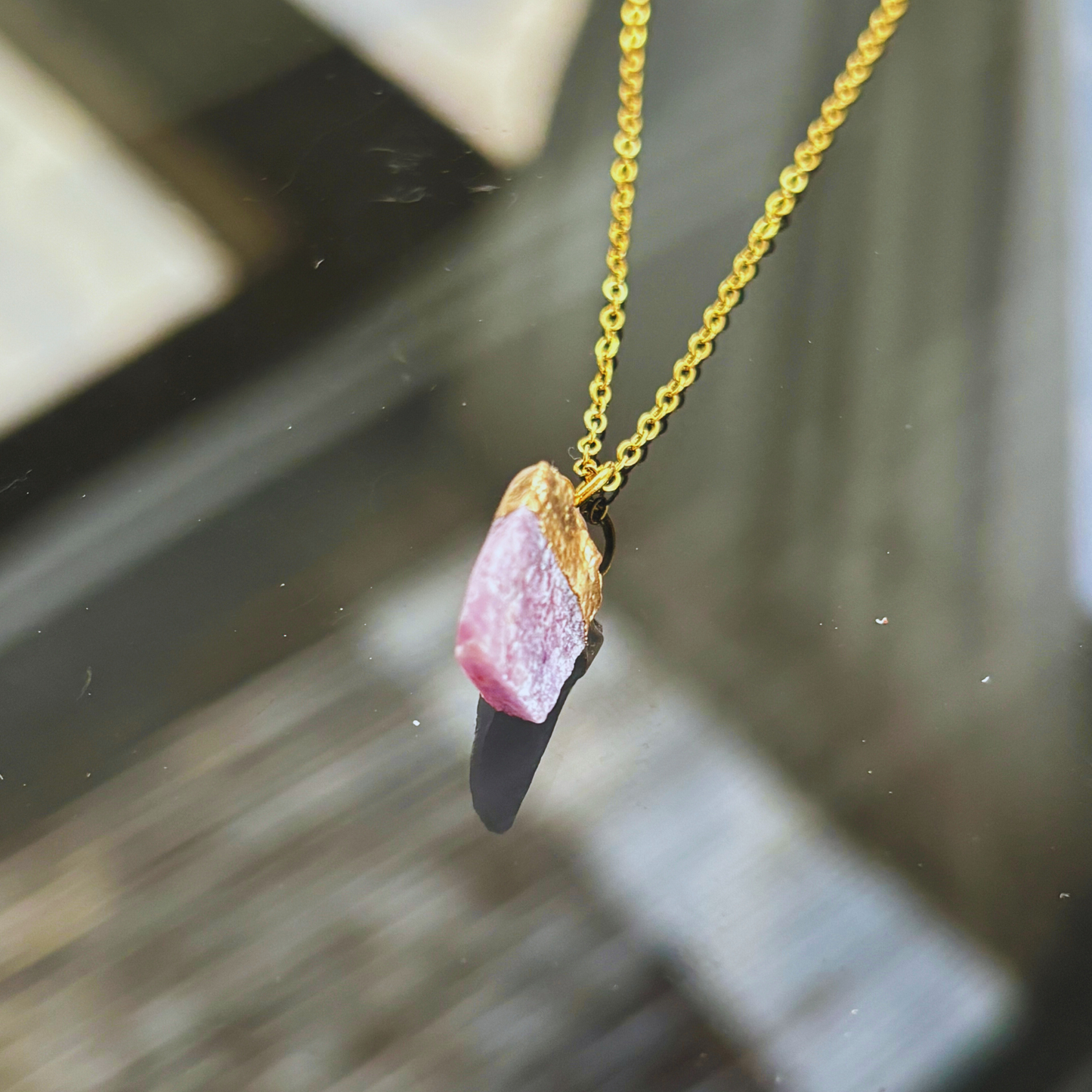Aquelia Design
Колие със суров червен турмалин
Колие със суров червен турмалин
Наличността за получаване на място не можа да се зареди
Физически свойства
Химическа формула: Комплексен боросиликат с алуминий (елбаит: Na(Li1.5,Al1.5)Al6Si6O18(BO3)3(OH)3(OH))
Цвят: Различни нюанси на червеното, от бледо розово до наситено червено, често с лилави или розови нюанси
Кристална система: Тригонална
Твърдост: 7 - 7,5 по скалата на Моос
Специфично тегло: 3.06
Прозрачност: Прозрачно до полупрозрачно
Блясък: стъкловиден
Ивица: Бяла
Оптични свойства
Индекс на пречупване: 1.624 - 1.644
Двойно пречупване: 0,018 - 0,040
Плеохроизъм: Силен, показващ различни нюанси на червено от различни ъгли
Флуоресценция: Обикновено няма
Лечебни и метафизични свойства
Енергия: Червеният турмалин, известен още като рубелит е камък на страстта, енергията и жизнеността, смята се, че привлича любовта и осигурява емоционална подкрепа.
Чакри: Основно свързан със сърдечната чакра
Емоционално изцеление: Насърчава положителната енергия, укрепва способността за разбиране на любовта и насърчава състраданието. Също така помага за излекуване на емоционални рани и повишава самочувствието.
Физическо лечение: Използва се в практики за лечение с кристали за подпомагане на сърдечно-съдовата система, подобряване на кръвообращението и подобряване на общата физическа издръжливост. Помага при лечението на репродуктивни разстройства.
Употреби
Бижута: Популярни в пръстени, колиета, обеци и гривни поради живия си червен цвят и добра издръжливост.
Декоративни: Използва се в дърворезби, мъниста и декоративни предмети.
Индустриален: Рядко използван индустриално, ценен предимно заради естетическите и метафизичните си свойства.
Грижа
Почистване: Може да се почиства с топла сапунена вода и мека четка. Избягвайте излагането на агресивни химикали и високи температури, тъй като те могат да повредят камъка.
Издръжливост: Червеният турмалин е относително твърд и издръжлив, но може да бъде надраскан от по-твърди материали. Трябва да се съхранява отделно от другите скъпоценни камъни, за да се предотвратят драскотини.
Източници
Основни източници: Червеният турмалин се намира по целия свят, със значителни находища в Бразилия, Нигерия, Мозамбик, Мадагаскар, Афганистан и Съединените щати.
Съвети за идентификация
Цвят и прозрачност: Отличителният червен цвят и прозрачност на червения турмалин могат да помогнат при идентифицирането му. Въпреки това, той може да бъде объркан с други червени скъпоценни камъни като рубин или червен шпинел.
Тестване: Гемологичните тестове могат да помогнат за разграничаване на червения турмалин от подобни на вид минерали чрез неговата специфична гравитация, индекс на пречупване и силен плеохроизъм.
Живият цвят, лечебните свойства и гъвкавостта на червения турмалин го правят предпочитан скъпоценен камък сред колекционери и ентусиасти на бижута. Неговият уникален външен вид и набор от приложения подчертават значението му както в метафизичните практики, така и в търговията със скъпоценни камъни.
Дължина: 44см+5см
Кристал: 1.5см-3см
Сподели


